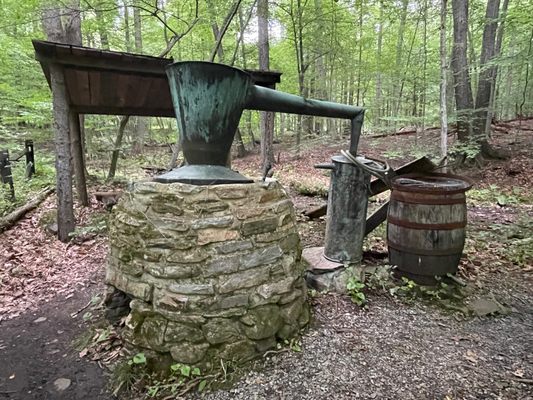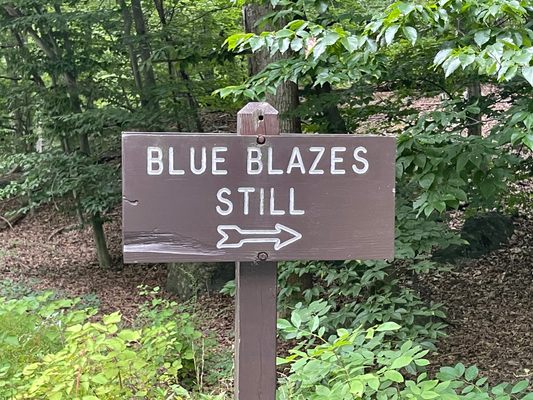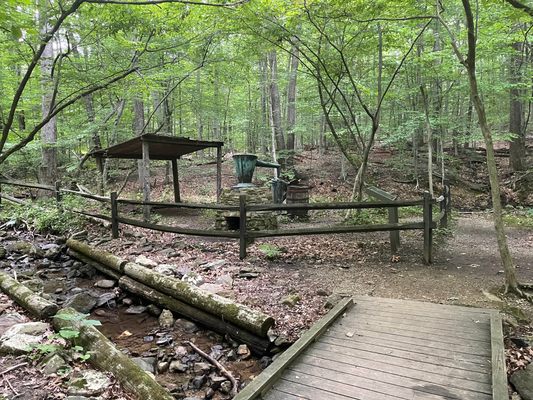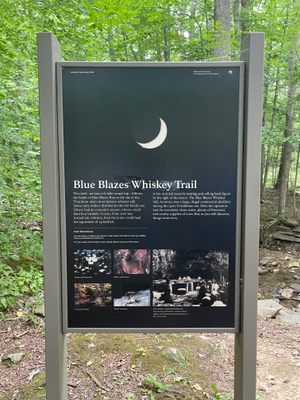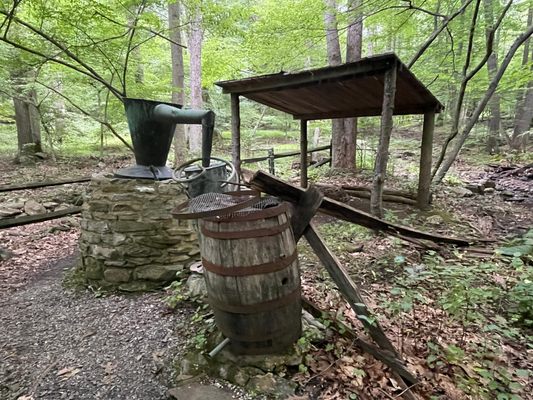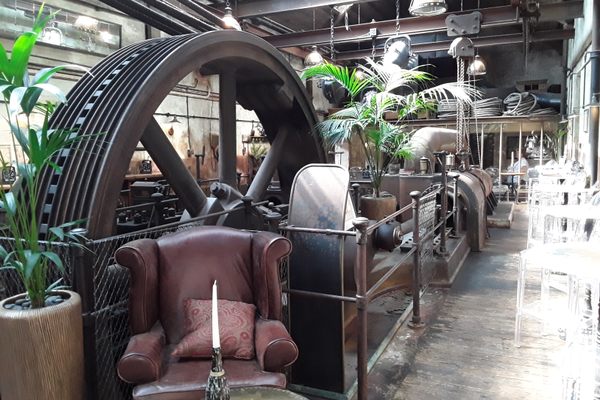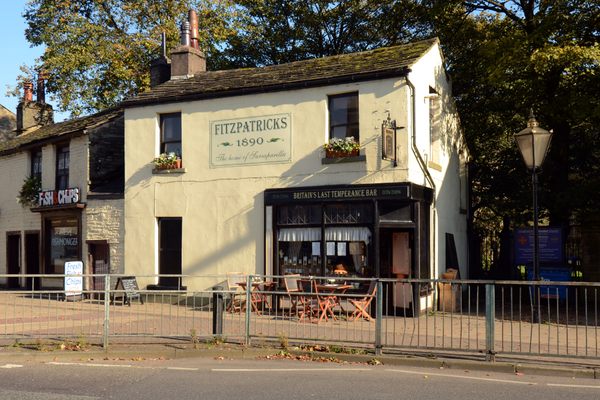About
A secluded clearing by a stream in the Catoctin Mountain Park in Thurmont, Maryland, was once the site of the notorious Blue Blazes Still, the largest illegal whiskey manufacturing enterprise to operate in Frederick County in the early 1900s. The clearing was also the location of an infamous raid that resulted in the shooting death of Frederick County Deputy Sheriff Clyde Hauver and the destruction of the operation.
The practice of distilling whiskey in the mountains of western Maryland dates back to the original settlers in the early 18th-century. When Prohibition began in January 1920, Frederick County was already home to a longstanding tradition of illegal whiskey production. The Blue Blazes bootlegging operation was uniquely situated to provide contraband whiskey to speakeasies in the Mid-Atlantic cities of Washington D.C, Baltimore, and Philadelphia. Given the size of the enterprise, the still used the huge boiler from a steam locomotive as a cooker and more than a dozen 500-gallon fermenting vats.
In late July 1929, Frederick County Deputy Sheriff Vernor Redmond received a tip from an informant about the Blue Blazes' location and operating times. Based on that information, on the evening of July 31, 1929, Redmond and Hauver led a raiding party up a narrow mountain path towards the reported bootlegging operation. Shortly before arriving at the clearing, the officers were fired upon from the underbrush. Chaos ensued, and during the firefight, Hauver appeared to trip over a tree root and fell to the ground. When the moonshiners finally retreated, the raiding party realized that Hauver was missing. They discovered him bleeding from a gunshot wound to the back of his head. He was rushed to the hospital in Frederick. Unfortunately, the blood loss from his head wound was too great and he succumbed to his injury without regaining consciousness. Hauver was the first Frederick County law enforcement officer killed in the line of duty.
The deputies who remained behind used axes and picks to destroy the still and vats. A search for the bootleggers resulted in eight arrests, including Redmond's alleged informant, Charles Lewis. Three bootleggers, including Lewis, were charged with Hauver's murder. Two were convicted, with Lewis receiving a life sentence. Although not convicted, the third defendant's house "mysteriously" burned down after he provided testimony against Lewis.
Rumor and innuendo surrounded the circumstances of the botched Blue Blazes raid. Many surmised that someone tipped off the bootleggers. Others believed the bullet that killed Hauver was intended for Redmond. There was talk of prior bad blood between Redmond and Lewis. At trial, Lewis contended that his bullet could not have killed Hauver because the deputy was shot from behind. Yet another unsubstantiated rumor was that Hauver's killing was revenge for his involvement in a love triangle.
The original still is long gone, but in its place is a 50-gallon pot still obtained from a raid in the mountains of east Tennessee. After the new still's installation at the Blue Blazes site in 1969, the National Park Service received a special permit to distill alcohol for interpretive demonstrations. The whiskey was rendered undrinkable by the addition of nausea-inducing chemicals. In 1989, the new Blue Blazes Still went cold when the government revoked its own distilling permit. However, the dormant still remains on public display.
Related Tags
Know Before You Go
The Blue Blazes Whiskey Still Trail is accessed from the gravel parking lot across from the Catoctin Mountain Park Visitor Center. Roundtrip to the Whiskey Still Exhibit from the trailhead and back is 0.6 miles.
Published
October 8, 2021
